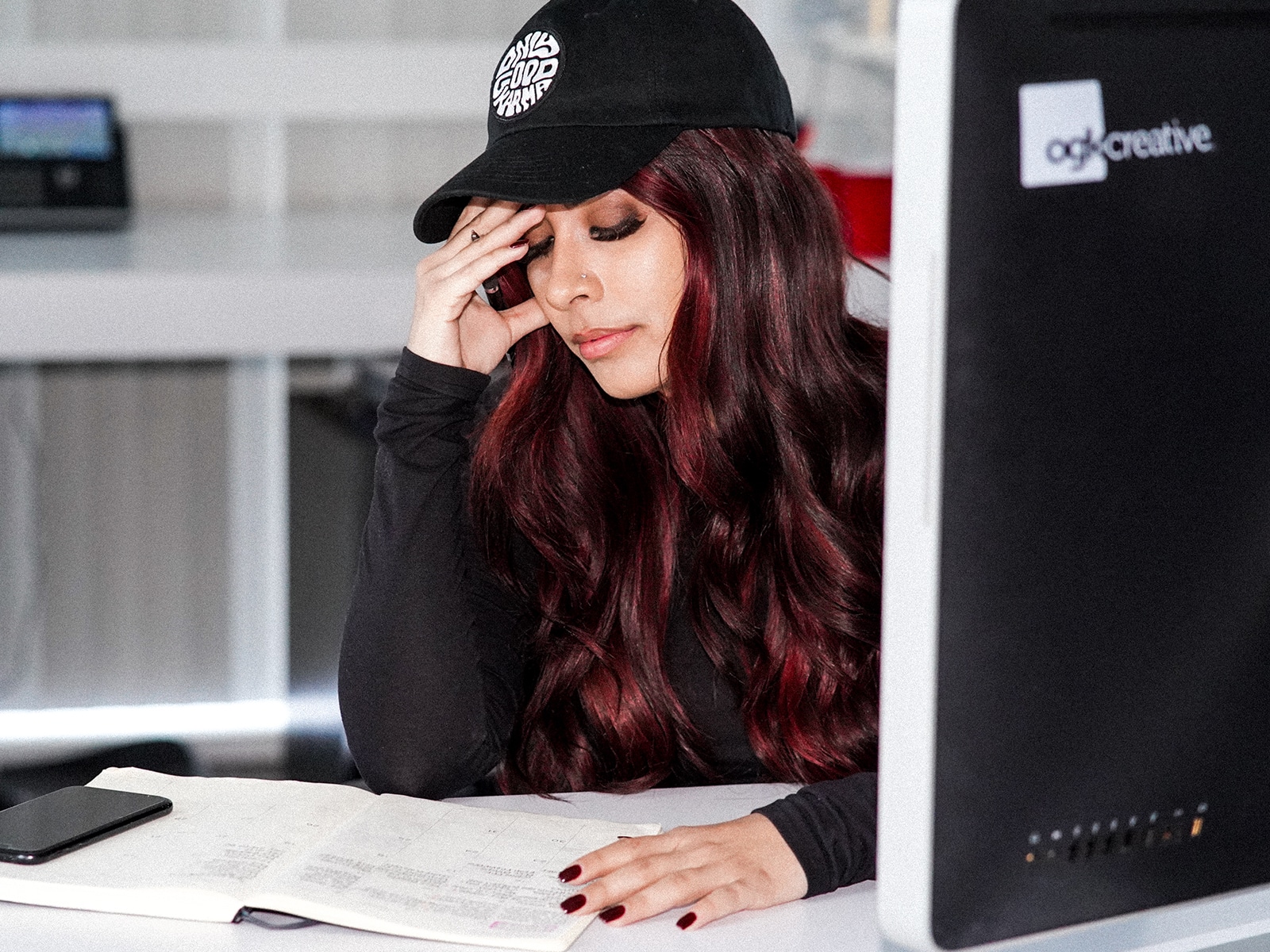Working as a creative professional means you often get to do what you love for a living. Expressing your creativity to the world in a tangible way can be incredibly gratifying. But what happens when the thing you’re most passionate about becomes a source of stress or anxiety? Like many occupations, burnout is a common occurrence. According to a survey from Gallup, about two-thirds of employees have felt the symptoms, and just under a quarter say they very often or always feel burned out. Emotional exhaustion, depersonalization and lacking personal accomplishment can happen no matter what field you work in. However, artists seem to be more susceptible to this feeling. This is because our work isn’t just what we do, it’s an expression of who we are. No artist is constantly inspired, and creativity comes and goes. Below are some tips that have helped me, and many other creatives, get through the dreaded burnout.
Tips for Overcoming Creative Burnout
1) Set boundaries, and stick to them
One of the most important things you can do before starting a project is understanding expectations, constraints and how long you have to complete the project. Time and energy spent on these projects can drain quickly, especially if you’re constantly cutting it close with deadlines. Knowing when to say no and communicating what you feel capable of is a crucial part of working as a creative. The reason for this is that the creative field is seldom understood by stakeholders. After all, winning ideas don’t always come to us as easily as some may think! Being able to communicate to the stakeholders that a timeline is unreasonable, or for better results they will need an additional three or four days is important for giving yourself time to create quality work and to really let your creative juices flow. If you’re feeling overwhelmed with work, or are on an extremely tight deadline, your quality may suffer. While happy clients are the goal, outlining clear boundaries can prevent you from burning out.
2) Don’t be so hard on yourself
Ask any artist if they are a perfectionist with their work and they will probably say yes. Some may even say that their extreme attention to detail is a strength. However, if you find yourself scrutinizing minor details and getting stuck on specific parts of a project it may be a sign that you’re being too hard on yourself, and will delay the completion of a project substantially. Once it blocks your ability to get things done, consider if you’re letting meticulousness or fear get in the way of finishing the project. Sometimes getting any ideas down on paper or in writing can rekindle the creative flame. Try to put perfectionism aside and just create. You may be pleasantly surprised with what you can do once you let go of your reluctance to “complete” a project.
3) Automate your work
If you are constantly forcing yourself to think of something new and creative each time a new project comes up you may find yourself exhausting all possibilities. This is where templates and automation can be very helpful, and they don’t have to be boring. Making custom templates that are prepared for you when you’re in a pinch can speed up your process when it comes to certain projects. These templates could take the form of components for app or web design including navigation, forms, product pages, etc. The time freed up may allow you to focus your time and energy on projects that require more brain power and innovation. Over time, you can test and tweak these templates to improve the user experience of each, but always keep in mind the users you are designing for when using a template.
4) Revisit your old work
On the same note of having templates and designs to pull from, you can also pull ideas and inspiration from your old work. For example, have you ever looked back at old work that you’ve done and tried to see it from a new perspective? This can help you overcome creative burnout in a couple different ways. First, the feeling of seeing old pieces you’ve done can be a good reminder that you’ve come very far. You may be able to look back at designs you’ve made and recognize the difference in process and productivity. So, not only do you get to see how far you’ve come, but you also get to relive and experience the emotions that went into certain projects. A reference for your successes can be a good way to find the motivation to keep going. Secondly, you can pull ideas and templated items from some of your old projects and reshape/modify them to fit your new project. You may think, “oh, I remember we made a product page similar to what is needed here. Let me pull that up quickly.” This is not a bad thing. Not every project needs to reinvent the wheel, and when something works, it works! Utilizing tried and tested designs from the past will give you inspiration and an extra boost to keep things going on your project.
5) Relax and get rest
Creative work can require us to sacrifice sleep or relaxation time. We can find ourselves staying up until the later hours of the night just trying to finish a part of a project before we put it away until the next day. If it starts to become a pattern, you may find yourself struggling to come up with creative ideas or never being satisfied with what you do. Ignoring your internal clock and pushing through moments when you feel most tired can affect your productivity, your mood and most importantly your mental health. Try to find moments during the work day in which you hit your creative stride and make that time sacred. No phone, no distractions, just you and your canvas. Once you’ve found a schedule that lines up with your productivity, work around those hours to find moments that allow you to relax, refocus your eyes and get some rest. Even if your break only lasts 15 minutes, it may allow you to approach your projects with a fresh perspective. Even for those of us who love what we do, we still need time away from work. Take your well deserved breaks and come back feeling refreshed and ready to go.

To wrap up…
Be patient and forgiving of yourself. At the end of the day, working as a creative with tight deadlines is a reality for so many of us. Amelia Nagoski, co-author of Burnout: The Secret to Unlocking the Stress Cycle noted that artists often create in order to deal with anxiety, and to “keep the overwhelm at bay.” Forgive yourself if you start to feel overloaded and remind yourself that it’s okay to not always feel the way you did when you first started, and that it’s okay to take a step back every once and a while. Your passion for making art and designing great experiences, and your need for a stable income can create a confusing flurry of passion and stresses. If you make it through a feeling of creative burnout, you will surely come out on the other side feeling stronger and more capable to tackle any issues that come your way.
